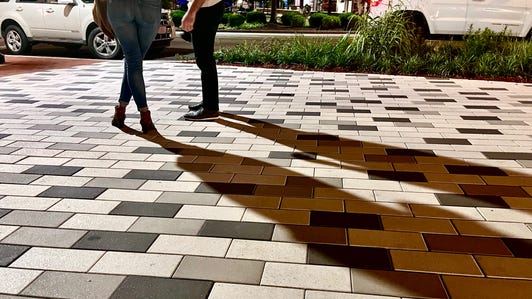
Apple's iPhone 14 series has been around for a couple of months now, and if you're looking to upgrade but you're not after Apple's latest and greatest phones, then there's a high chance the iPhone 13 or iPhone 12 feature high on your list.
Both the iPhone 13 and iPhone 12 are still solid devices even in 2022 and generally offer an up-to-date-experience, though they have their differences.
The iPhone 13 series -- consisting of the iPhone 13 Mini, iPhone 13, iPhone 13 Pro and iPhone 13 Pro Max -- offer some helpful features that differentiate it from 2020's iPhone 12. The iPhone 12 lineup, meanwhile, still makes for a great buy (though the iPhone 12 Pro was discontinued). They run plenty fast, thanks to Apple's A14 Bionic chip, support 5G and have impressive cameras.
But which iPhone should you buy? Are the extra features you get for the iPhone 13 worth it for the extra cash? It will depend on what iPhone model you're upgrading from and the condition of your current device. However, running through a few key differences between the 13 and 12 lines may help you decide whether to spring for a top-of-the-line 2021 iPhone, save some money with a 2020 model, or wait it out till Apple's next event expected in the fall. You can also go for a refurbished iPhone 12 model if there's stock on the Apple website.
Read more: The iPhone 13 Is Still Missing These Features Available on Android Phones
Price
At first look, the iPhone 12's starting price is a full $100 cheaper than the iPhone 13, but that's before you take storage space into consideration. Both iPhone 12 models start at 64GB, which several years ago used to be plenty of room. Now with apps getting larger and cameras taking even more detailed photos along with video, you could run up against that storage limit sooner than you think, especially if you capture a lot of photos and videos, among other things. Now that the iPhone 14 series has arrived, Apple has dropped prices of earlier iPhone models. The iPhone 13 starts at 128GB, and retails for $729. If you compare that with a 128GB iPhone 12, which starts at $679 -- you're only looking at a $50 price difference.
For that $50 difference, you do get a lot for your money by going with the iPhone 13, which we will go over in later sections. But if all you want is a 5G iPhone and you're unlikely to install a ton of apps on it, the iPhone 12 is indeed cheaper while still having most of the same features as the iPhone 13.
Battery life
The iPhone 13 is estimated to run for 2.5 hours longer than the iPhone 12, while the iPhone 13 Mini is estimated to run 1.5 hours longer than the 12 Mini. In CNET editor Patrick Holland's iPhone 13 and 13 Mini review, he notes that both phones easily make it through a day on a single charge. This was particularly notable since his personal iPhone 12 Mini usually requires a 3 p.m. recharge to make it through the day.
A15 Bionic vs. A14 Bionic
For most tasks, the A14 Bionic and A15 Bionic chips will each likely breezily handle your FaceTime calls, texts, apps, games and streaming videos with little discernible difference. Most people will be perfectly happy with the iPhone 12, which runs on the A14 Bionic processor.
However, the iPhone 13's A15 Bionic may be designed to be compatible with future devices and software in the works by Apple. Reports suggest that Apple is working on an augmented reality and VR headset that could use the iPhone 13 and future iPhone models as a host device.
Read more: Apple's VR, AR Headset Plans: Latest Rumors and Reports
The main current difference is that the iPhone 13's chip enables the Cinematic video recording mode. In this mode the phone can automatically focus on subjects as they enter the frame while unfocusing on others, giving your videos a movie-like look. These videos can also be edited after the fact should you want more control over who is in focus.
Cameras
The camera specs of the iPhone 13 and the iPhone 12 are identical. Both phones include 12-megapixel sensors on the front and the back cameras. But those specs don't tell the whole story about the photo processing differences between the phones.
On the iPhone 13, the new camera layout gives the wide-angle camera a larger sensor with sensor-based stabilization. The new diagonal layout of the iPhone 13's cameras allows for that larger sensor, while the ultrawide camera's new sensor helps it gather more light. On the software side, the iPhone 13 also includes Photographic Styles, which allow you to customize the way your camera develops your photos. These styles are not like Instagram filters, as they analyze the subject of your photo and apply the selected style as needed.
iPhone 13, iPhone 13 Mini camera testing: See how Apple's new phones take photos
See all photosThat said, the iPhone 12's cameras are still no slouch, including many of the same enhancements offered by iOS 15. In our review, Holland notes that the iPhone 13's camera upgrades do not make drastic differences, but improvements between the models year over year were noticeable.
Spec vs. spec
Check the chart below comparing the iPhone 13, the iPhone 13 Mini, the iPhone 12 and the iPhone 12 Mini to see a spec-by-spec comparison among the non-Pro iPhones that are currently available. Let us know in the comments if you'd rather save money with the iPhone 12, jump in with a new iPhone 13 or if your current iPhone is still the best for all of your daily needs.
iPhone 13, Mini vs. iPhone 12, Mini
|
|
iPhone 12 Mini | iPhone 13 Mini | iPhone 12 | iPhone 13 |
|---|---|---|---|---|
| Display size, resolution | 6.1-inch OLED; 2,532x1,170 pixels | 5.4-inch OLED; 2,340x1,080 pixels | 5.4-inch OLED; 2,340x1,080 pixels | 6.1-inch OLED; 2,532x1,170 pixels |
| Pixel density | 460ppi | 476ppi | 476ppi | 460ppi |
| Dimensions (inches) | 5.78x2.82x0.29 in | 5.18x2.53x0.3 in | 5.18x2.53x0.29 in | 5.78x2.82x0.3 in |
| Dimensions (millimeters) | 146.7x71.5x7.4mm | 132x64x7.65mm | 131.5x64.2x7.4mm | 147x72x7.65mm |
| Weight (ounces, grams) | 5.78 oz; 164g | 4.97 oz; 141g | 4.76 oz; 135g | 6.14 oz; 174g |
| Mobile software | iOS 14 | iOS 15 | iOS 14 | iOS 15 |
| Camera | 12-megapixel (wide), 12-megapixel (ultrawide) | 12-megapixel (wide), 12-megapixel (ultrawide) | 12-megapixel (wide), 12-megapixel (ultrawide) | 12-megapixel (wide), 12-megapixel (ultrawide) |
| Front-facing camera | 12-megapixel | 12-megapixel | 12-megapixel | 12-megapixel |
| Video capture | 4K | HDR video recording with Dolby Vision up to 4K at 60 fps | 4K | HDR video recording with Dolby Vision up to 4K at 60 fps |
| Processor | Apple Bionic 14 | Apple A15 Bionic | Apple A14 Bionic | Apple A15 Bionic |
| Storage | 64GB, 128GB, 256GB | 128GB, 256GB, 512GB | 64GB, 128GB, 256GB | 128GB, 256GB, 512GB |
| RAM | Undisclosed | Undisclosed | Undisclosed | Undisclosed |
| Expandable storage | No | No | No | No |
| Battery | Undisclosed; Apple lists 15 hours of video playback | Undisclosed; Apple lists 17 hours of video playback | Undisclosed; Apple lists 15 hours of video playback | Undisclosed; Apple lists 19 hours of video playback |
| Fingerprint sensor | No (Face ID) | No (Face ID) | No (Face ID) | No (Face ID) |
| Connector | Lightning | Lightning | Lightning | Lightning |
| Headphone jack | No | No | No | No |
| Special features | 5G enabled; MagSafe; water-resistant (IP68); wireless charging; dual-SIM capabilities (nano-SIM and e-SIM) | 5G enabled; MagSafe; water-resistant (IP68); wireless charging; dual-SIM capabilities (nano-SIM and e-SIM) | 5G enabled; MagSafe; water-resistant (IP68); wireless charging; dual-SIM capabilities (nano-SIM and e-SIM) | 5G enabled; MagSafe; water-resistant (IP68); wireless charging; dual-SIM capabilities (nano-SIM and e-SIM) |
| Price off-contract (at launch) (USD) | $629 (64GB), $679 (128GB), $779 (256GB) | View More









 Add Category
Add Category

